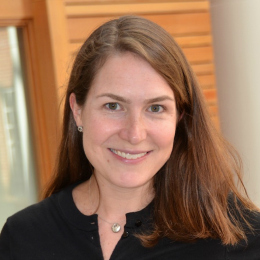New study gives insight into how often COVID-19 spreads through households
August 30, 2021
A new study out in the journal Clinical Infectious Diseases demonstrates how quickly COVID-19 can spread through a household. It also povides insight into how and why communities of color have suffered disproportionately from the pandemic.
The observational study, conducted between April and October of 2020, followed 100 COVID-positive patients around the Raleigh, North Carolina, area. In addition, 208 household members participated. (A household member was defined as someone staying in the same living space as the person who tested positive.)
Researchers tested other household members weekly with PCR nasal swabs for three weeks following the initial COVID case, or by a seroconversion antibody test at the fourth week. Excluding 73 household members who already tested positive for COVID when researchers got to their home, the secondary attack rate among household contacts was 32%.
“We think this number is actually much higher,” says Jessica Lin, MD, the study’s senior author and assistant professor in the Division of Infectious Diseases at the University of North Carolina at Chapel Hill School of Medicine. “Sometimes, we were getting to households to test people four or five days after the initial COVID-positive person showed symptoms. By that time, a lot of household members were already infected. But, because that infection happened before we got there, we couldn’t include it in our data.”
What’s more, the study took place before the more infectious Delta variant was widely circulating in the United States, leading Lin to believe the current secondary attack rate in households is significantly higher.

Dr. Kimberly Powers

Dr. Feng-Chang Lin
The researchers include five members of the UNC Gillings School of Global Public Health: Kimberly Powers, PhD, associate professor, and , MPH, doctoral student, both in the Department of Epidemiology, and , biostatistician and doctoral student, and
The research team found that the majority of secondary cases occurred within the first week of the initial positive COVID test. The secondary cases shared a similar nasopharyngeal viral load, which is the amount of virus a person has in their nose and throat.
“This means the viral load of the index case matters,” Lin says. “A higher viral load means it’s more likely that there will be secondary transmission in a household, and viral load is also an indication of how sick a person could get from the virus.”
The study also looked at living density — the concentration of people living within one household — as a factor that determined whether COVID spread to other household members. Of the participants enrolled in the study, 44% identified as Hispanic or non-white. Researchers found that minority households were more likely to experience a higher living density, and therefore had a higher risk of secondary infection than white households.
“It’s very difficult to follow public health guidelines in some living situations,” Lin explains. “If you have multiple people and generations sharing common areas or bedrooms, or if you are a single parent, it becomes nearly impossible to isolate or even physical distance.”
Lin says these findings all come back to one key message — vaccinations. The more people in a household who are vaccinated, the less likely the chance that secondary COVID infections will occur. Even if one person is vaccinated, it helps, especially if the vaccinated person happens to be the first infection in a household. A person who has been vaccinated will most likely have a lower viral load, which will make it harder for the virus to infect other household members.
“Household transmission really is the main place where most people are getting COVID,” Lin says. “It’s spreading from their family and friends, from people who are in their bubble and who they feel safe with. When you get vaccinated, you aren’t just protecting yourself — you’re protecting those important people around you.”
This study was funded by the UNC COVID-19 Response Fund, the North Carolina Translational and Clinical Sciences Institute (NC TraCS) and a UNC Gillings Innovation Lab Award.
Contact the UNC Gillings School of Global Public Health communications team at sphcomm@unc.edu.
